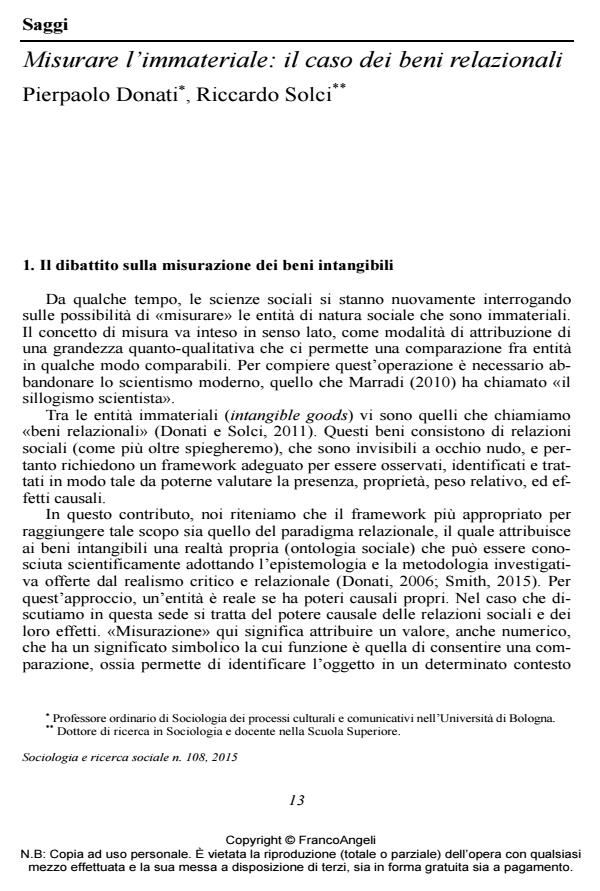Measuring the Immaterial: the Case of Relational Goods
Journal title SOCIOLOGIA E RICERCA SOCIALE
Author/s Pier Paolo Donati, Riccardo Solci
Publishing Year 2016 Issue 2015/108
Language Italian Pages 20 P. 13-32 File size 123 KB
DOI 10.3280/SR2015-108002
DOI is like a bar code for intellectual property: to have more infomation
click here
Below, you can see the article first page
If you want to buy this article in PDF format, you can do it, following the instructions to buy download credits

FrancoAngeli is member of Publishers International Linking Association, Inc (PILA), a not-for-profit association which run the CrossRef service enabling links to and from online scholarly content.
The paper discusses how to measure the social intangible goods called «relational goods» (BR). In order to define these goods and carry out a survey to measure them, the authors adopted the paradigm of relational sociology which has been developed in Italy in the last three decades. After clarifying the sociological definition of the relational goods, the authors operationalize the concept in a multidimensional way, as constituted by two relations, the intersubjective relationship (RS) and the reflexivity relation (RI). The methodological and empirical analysis is carried out along various dimensions, from both quantitative and qualitative perspectives. The different dimensions of the relational goods are measured through the introduction of items, indicators and sub-indexes, and the use of vector (not scalar) quantities. The empirical survey has been applied to groups of mutual and self-help (third sector) and for profit enterprises. The empirical results show that the proposed model of investigation is valid. It allows the assessment of relational goods produced in different spheres of society, on the basis of the quality and causal power of the social relations constituting these intangible goods
- After Liberalism? Pierpaolo Donati, pp.85 (ISBN:978-3-030-75701-4)
Pier Paolo Donati, Riccardo Solci, Misurare l’immateriale: il caso dei beni relazionali in "SOCIOLOGIA E RICERCA SOCIALE " 108/2015, pp 13-32, DOI: 10.3280/SR2015-108002